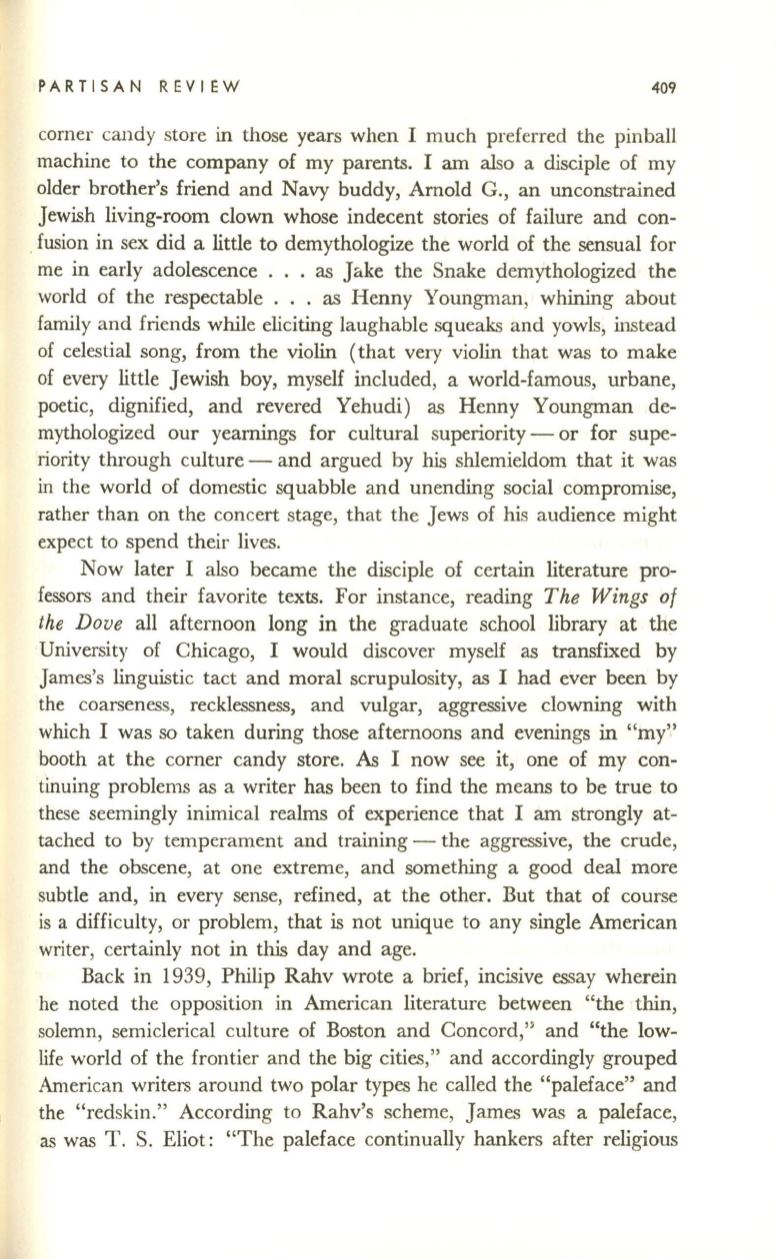
PARTISAN REVIEW
409
corner candy store in those years when I much preferred the pinball
machine to the company of my parents. I am also a disciple of my
older brother's friend and Navy buddy, Arnold G., an unconstrained
Jewish living-room clown whose indecent stories of failure and con-
. fusion in sex did a little to demythologize the world of the sensual for
me in early adolescence ... as Jake the Snake demythologized the
world of the respectable . . . as Henny Youngman, whining about
family and friends while eliciting laughable squeaks and yowls, instead
of celestial song, from the violin (that very violin that was to make
of every little Jewish boy, myself included, a world-famous, urbane,
poetic, dignified, and revered Yehudi) as Renny Youngman de–
mythologized our yearnings for cultural superiority - or for supe–
riority through culture - and argued by his shlemieldom that it was
in the world of domestic squabble and unending social compromise,
rather than on the concert stage, that the Jews of his audience might
expect to spend their lives.
Now later I also became the disciple of certain literature pro–
fessors and their favorite texts. For instance, reading
The Wings of
the Dove
all afternoon long in the graduate school library at the
University of Chicago, I would discover myself as transfixed by
James's linguistic tact and moral scrupulosity, as I had ever been by
the coarseness, recklessness, and vulgar, aggressive clowning with
which I was so taken during those afternoons and evenings in "my"
booth at the corner candy store.
As
I now see it, one of my con–
tinuing problems as a writer has been to find the means to be true to
these seemingly inimical realms of experience that I am strongly at–
tached to by temperament and training - the aggressive, the crude,
and the obscene, at one extreme, and something a good deal more
subtle and, in every sense, refined, at the other. But that of course
is a difficulty, or problem, that
is
not unique to any single American
writer, certainly not in this day and age.
Back in 1939, Philip Rahv wrote a brief, incisive essay wherein
he noted the opposition in American literature between "the thin,
solemn, semiclerical culture of Boston and Concord," and "the low–
life world of the frontier and the big cities," and accordingly grouped
American writers around two polar types he called the "paleface" and
the "redskin." According to Rahv's scheme, James was a paleface,
as was T. S. Eliot: "The paleface continually hankers after religious


